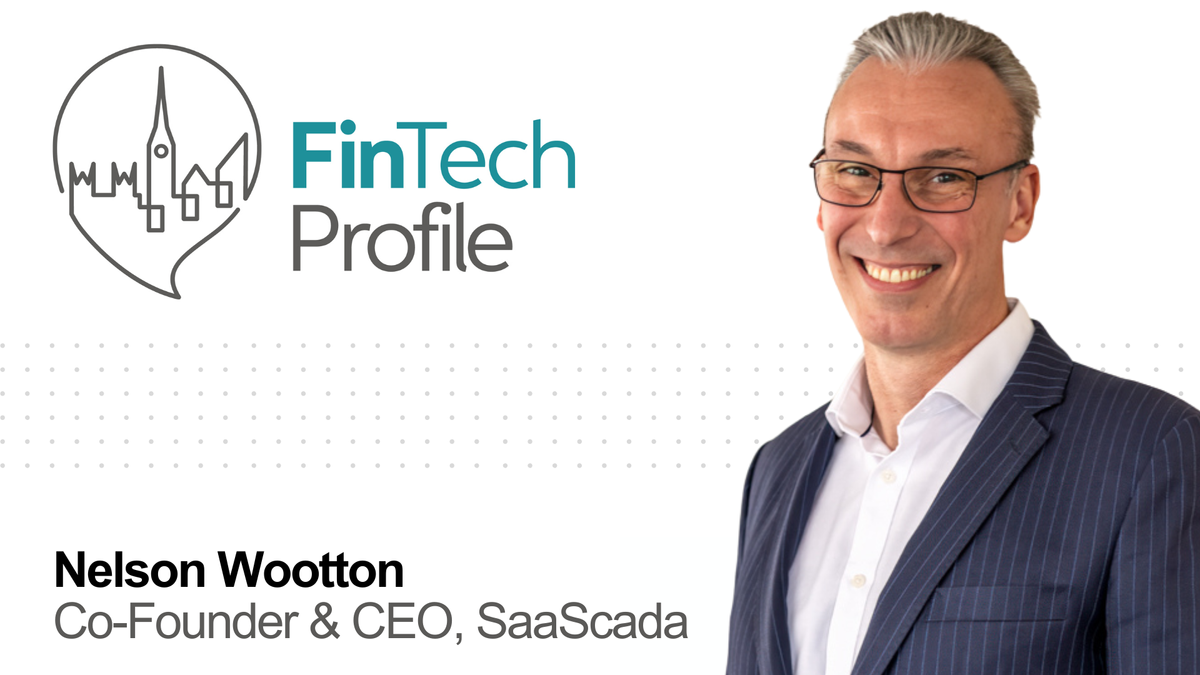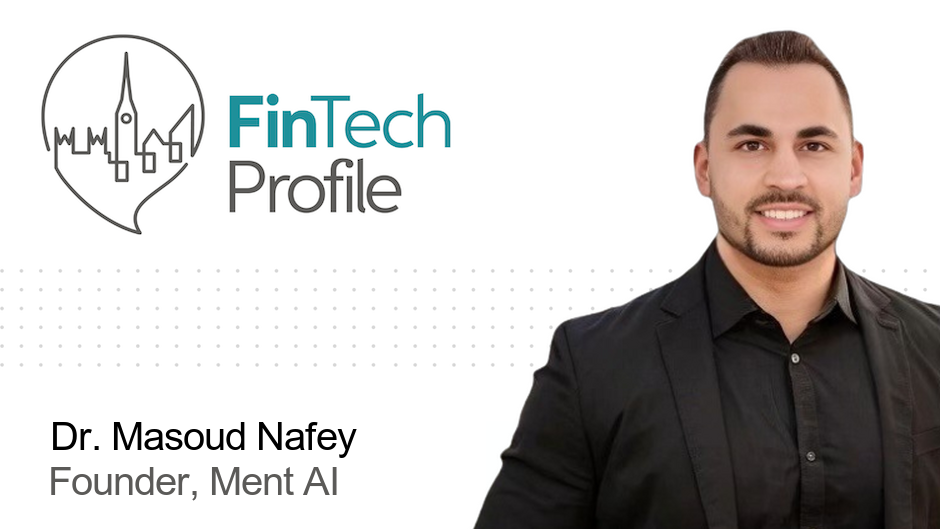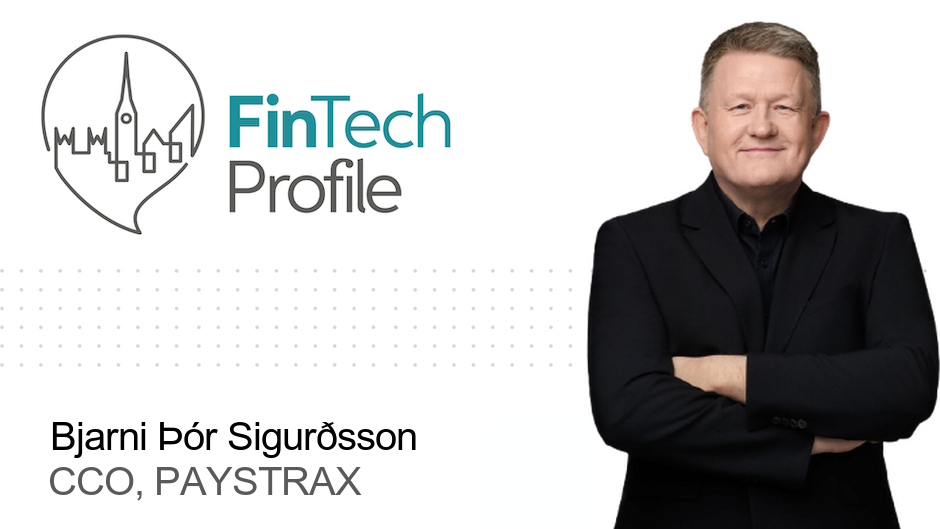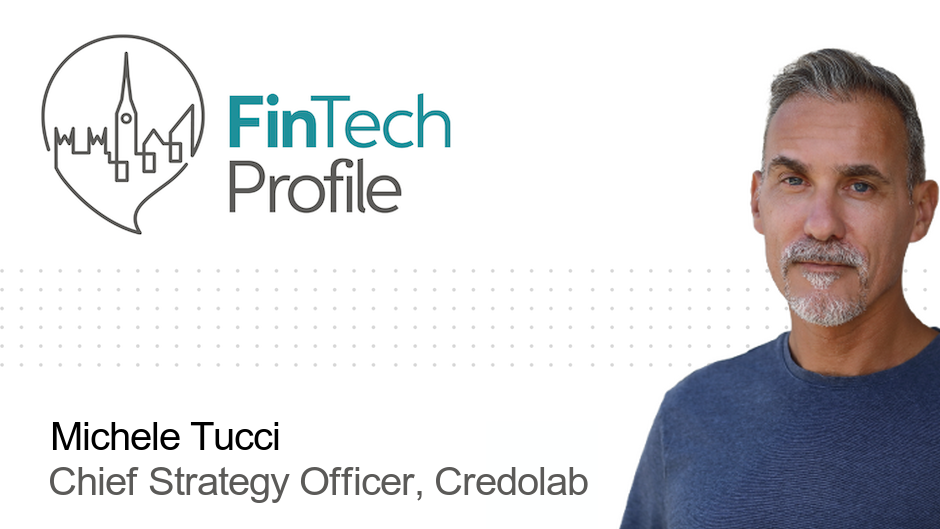Nelson Wootton, Co-Founder & CEO, SaaScada

Today I'm delighted to be bringing you an interview with 🚀Nelson Wootton, the Co-Founder and CEO of next-generation cloud native core banking provider SaaScada.
Over to you Nelson - my questions are in bold:
Who are you and what's your background?
I’m someone who learns by doing. I didn’t go to university, I went straight into the business world. I’ve always had an entrepreneurial streak, looking for that gap in the market that I could dig into and build something. Back in the 80s, I was working for a printing company – printing cheques as it happens, my first taste of financial services! I noticed that flashy business cards were all the rage, so I turned my hand to printing quality business cards with gold leaf. That did well.
I fell into IT in the 90s. I was in a band – The Waterchill Project – so I built a website to promote us. This was just when the internet was becoming ‘a thing’ so I was quite ahead of the game, and it was pretty good – especially when compared to what others were doing at that time. While I didn’t get the big record deal, I did get headhunted by a guy who was running an IT professional services business building websites. I ended up helping to build and run the business, and in the end, we did a buy-out – which was where I first met Steve Round (my current co-founder), although we then parted ways for several years.
I then set up my own consultancy firm. I was the guy who was parachuted in to solve tech problems when everything hit the fan. But often, I would find the problems I was solving were more about people than technology. I’d end up going into businesses as their acting CTO, working with them to get things up and running and then I’d leave. Like an IT Mary Poppins. This exposed me to many different businesses, and different problems.
Nine years later, I bumped into Steve again, and he had a cunning plan…
What is your job title and what are your general responsibilities?
I’m CEO and Co-Founder, so my main focus is on building and leading the executive team, balancing wider stakeholder requirements with investors, customers, shareholders and so on. So pretty standard stuff. Although as a techy, I do also get involved with helping to develop the product.
Can you give us an overview of your business?
SaaScada provides a cloud native core banking system. We take care of the engine that keeps a financial institution running, allowing them to focus on the bits that make them different.
Think about it. If you strip a bank back and look under the hood, they all look very similar. All Financial Institutions in the world have layers within their tech stack that are common to all of them. They will all have some type of financial product – loans, current accounts, investment portfolios. Underneath that sits all the ledgers and then various integrations to local payment systems, international payment systems, like Swift, or card processors, exchanges and so on.
This stack is mandatory. But it’s not where the magic happens. This behind-the-scenes stuff isn’t what will make a customer choose one bank over another. It’s commoditised, something that everyone has to do. The interesting bit is what sits on top of that – their approach to risk profiling and borrowing, the customer service, onboarding, reputation, brand, the company DNA that customers see and interact with.
So, our goal was to take the core stack piece – the bit that everyone has to invest in but that isn’t going to give them their USP – and make that easy, affordable, fast, scalable and reliable. That way, businesses can put the focus on what makes them unique.
By rearchitecting how core banking services are delivered, we simplify and accelerate the cost-effective development of new products and services – enabling launch in months instead of years in a compliant, and secure way. We also enable our customers to tap into rich veins of transactional data. Ultimately, we take care of the boring bits, so our customers don’t have to.
Tell us how you are funded?
Starting out, we approached investors in the businesses I had served in my consultancy work. We told them what we were planning and the problem we solved, showed them the platform, and they all invested. So initially we were supported by high-net-worth Angels. We then raised our first round of VC money in 2023.
What’s the origin story? Why did you start the company? To solve what problems?
Steve Round (co-founder and President of SaaScada) and I had worked together back in 2002, but we hadn’t seen each other for about a decade. Then in 2012 we had a chance meeting at Manchester train station and got into the usual chit chat about what we had been doing.
Steve was the Chairman of the Big Issue Foundation and had this idea about creating a bank account for people on low incomes or with no fixed address. After a decade and a half of practically zero interest rates, people on low incomes were not profitable to banks as they don’t pay in much in the way of deposits. So, there wasn't a great appetite in the banking sector to deliver that type of service. The government was pushing for banks to provide ‘banking lite’ products, but we thought full-feature bank accounts should be available to all – no matter your financial circumstance.
In response, we set out to provide a bank account specifically for people on low incomes. However, as we set out to build this bank, we realised how big, expensive, time consuming and hard it was to deploy core banking platforms at the time. Setting up accounts, making changes, adding new features, and improving customer experience was a heavy investment. The expense of running the account would make it impossible for us to do what we wanted. So, we had to find a way to lower the cost of banking to make it feasible.
We decided if we couldn’t buy something, we’d have to build it. I was an early adopter of cloud technology and had written tons of software in the cloud, so we set about building a core to deliver the product. We built it all in the cloud to lower the cost. The Change Account launched in 2015, and we were one of the first mobile only wallets in the market. Our customers were able to set special features to ensure they could better manage their money. For example, having a separate account for rent and one for bills, which you see as commonplace now with neobanks like Monzo. It was very feature rich, unlike the ‘lite’ bank accounts that were being pushed at the time. It was a paid account, but we structured it to ensure people got their money back by bundling in a load of retail rewards. If people spent just £100 a month, they could get their fees back through the rewards, and the rest was just a bonus.
Having done that and successfully built that bank, we exited. But we still had the technology. We figured we weren’t the only ones looking for a low-cost core banking platform, so decided to take it to market. We took everything we’d learnt about core banking, and what’s wrong with it, and built the solutions into SaaScada. Our core has been proven time and time again, and we still have a passion for financial inclusivity at our heart.
The lessons we learnt in this process have been invaluable – we really understand our customers’ challenges because we were in their shoes. When running the bank, we had two huge frustrations: firstly, a lack of product agility. Secondly, the amount of time to get data out of core banking systems.
To put this into context, it typically takes most financial institutions 6-8 weeks to get data out of core banking, reconcile it with other systems, and present it up to the management or the board. And it’s only after you’ve done all that that you can understand what is and isn’t working on a product. Then you have to go back to your core banking vendor and say I’d like to make a change, then the core provider will send you a six-figure bill and will do an IT project in about 3 months. Then it takes another 6-8 weeks to see if that change works. The best part of a year has gone past on a single product iteration, and this isn’t workable in todays’ world.
SaaScada is meeting these challenges head on. We have lowered the cost of running and building core baking systems, we enable customers to change and deploy products by themselves, making it very developer friendly and API-driven. And we provide real-time data on what is happening in that system that tells you what is right or wrong about your assumptions in that market – and the ability to make dynamic changes when they are needed.
Who are your target customers? What’s your revenue model?
We are a SaaS (Software-as-a-Service) company, so that’s our model. But in terms of Go-to-Market and target customer, this can vary according to region. When we hit a new market, we are really focused on the quicker wins – nimble fintechs and smaller banks where we can generate buy-in from senior decision makers (often founders) and get moving quickly. These buyers tend to be much more focused on speed – they have a licence and want to get up and running generating revenue as soon as possible, and that’s where our platform can really shine.
We can then leverage that foothold to get to know the local market – stuff like connecting to a local payment system, regulatory reporting, working with local fraud monitoring, and so on. Once we have all that under our belt, we then start targeting existing banks in the market.
In our more established markets, our sweet spot is banks that are looking to launch new products in the market or take existing products into a new parallel market. Our ideal partners are those who want to experiment, they’re ready to try something new. They’re sick of their old providers sending them a six-figure bill and a 6-8 week wait time for a simple fix, they want to take things back into their control.
With SaaScada, you can get running in a few days, and we can run alongside an existing core, so the risk is low. In fact, we don’t tend to target FIs who are looking for replacements, because often they aren’t really looking for real change – they just want to do what they’re doing at a slightly lower cost. We are happy to be that, but to get the real benefits of the platform you really want to think about the processes your organisation goes through and decide if they are appropriate today. It’s more about transformation.
If you had a magic wand, what one thing would you change in the banking and/or FinTech sector?
I would love for the regulators to be clearer with regulated businesses about what they require of them. It’s the same all over the world, and it’s very frustrating for organisations working within that framework. It shouldn’t have to be that hard.
I’d also like people to wake up to the fact that just because something says it’s cloud, doesn’t mean it really is. There is a lot of cloud washing – with people slapping ‘cloud’ on old technology that isn’t really cloud native and doesn’t deliver on what true cloud can provide.
What is your message for the larger players in the Financial Services marketplace?
Change is coming, and it’s coming faster than you think. It’s true that mortgage portfolios provide long revenue and lots of security, but the reality is customers are looking for services from FinTechs that banks aren’t able to offer. For banks to stay relevant they must think about how they address some of their own shortcomings. The pace of change is also increasing. Technology is allowing FIs to better segment, understand, and service customers, are you?
Where do you get your Financial Services/FinTech industry news from?
I read FinExtra, but I also pay a lot of attention to Angular Ventures which gives deep insight into how VC investment is being approached, what looks good and what doesn’t. A very useful read.
Can you list 3 people you rate from the FinTech and/or Financial Services sector that we should be following on LinkedIn, and why?
I follow Ewan MacLeod of course, and FinTech and digital transformation expert Bryan Carroll. Paul Staples is a guy to watch out for, advocating for how banks should operate.
What FinTech services (and/or apps) do you personally use?
I travel a lot, and Revolut has become my go to for cross currency spending. I also have a Starling account - I love the spaces concept and the authentication process. Additionally we also have an Allica account, they took Starling's spaces idea and added interest, which is a huge bonus.
What’s the best new FinTech product or service you’ve seen recently?
We are working with quite a few interesting clients that it’s well worth keeping an eye on.
Sunshine + Kittens is a new kids banking app that is cool. I’m a dad, so it’s great to work with a team that is really thinking about engaging kids in understanding and embedding financial literacy into everyday life. They have an amazing creative team who have worked on things like Star Wars, so the graphics are awesome, and it uses gamification in a unique way. So, they are certainly ones to watch out for.
Finally, let's talk predictions. What trends do you think are going to define the next few years in the FinTech sector?
We have been talking to a lot of clients about multigenerational bank accounts and I think that will be a big area of development in the coming years. People are living longer, and it is becoming harder for young people to get a start on the housing ladder, we need new solutions that make all that easier for families to manage. So, I’m excited to see what happens there.
AI is obviously a big trend, but I think for FS it’s going to be really use-case driven and all about using data for very specific outcomes. Which is great for us as we give real-time access to transactional data!
Nelson, that was brilliant, thank you for participating!
You can read more about 🚀Nelson Wootton on LinkedIn and you can find out more about his company SaaScada at https://saascada.com/.




